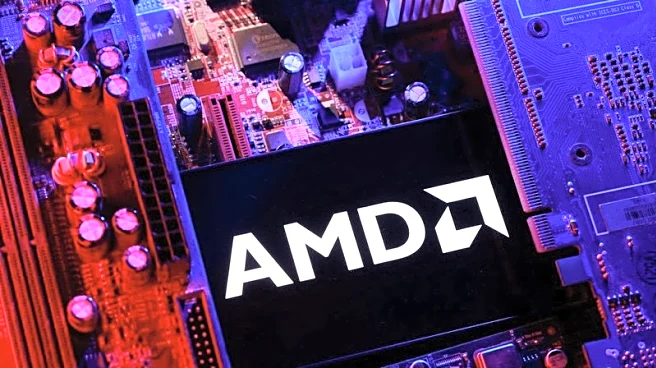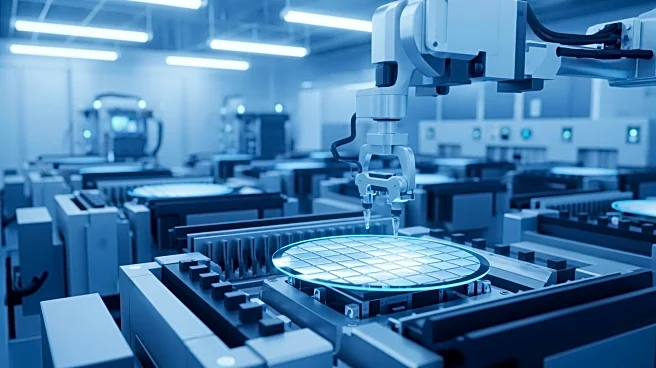What's Happening?
Wells Fargo has raised its price target for Advanced Micro Devices (AMD) from $300 to $345 following the company's recent analyst day. This adjustment reflects a bullish outlook on AMD's stock, driven
by CEO Lisa Su's forecast of a 35% compound annual revenue growth over the next three to five years. The demand for artificial intelligence chips is cited as a key catalyst for this growth. AMD's AI data center business is expected to grow at an annual rate of 80%, potentially reaching billions in sales by 2027. The company aims to capture a double-digit share in the data center AI chip market within the next few years, with expectations of AI data center revenue hitting $1 trillion annually by 2030.
Why It's Important?
The increased price target and positive outlook for AMD highlight the growing significance of artificial intelligence in the tech industry. As demand for AI chips continues to rise, companies like AMD are positioned to benefit significantly, potentially reshaping the competitive landscape in the semiconductor market. This development could lead to increased investor confidence and further investment in AI technologies, impacting the broader tech sector and related industries. The forecasted growth in AMD's AI data center business underscores the potential for substantial economic contributions from AI advancements.
What's Next?
AMD's strategic focus on AI chip development and data center expansion suggests continued investment in these areas. The company's ability to execute its technology roadmap and navigate competitive risks will be crucial in achieving its ambitious revenue targets. Stakeholders, including investors and industry competitors, will likely monitor AMD's progress closely, assessing its impact on market dynamics and potential shifts in industry leadership.
Beyond the Headlines
The emphasis on AI chip demand reflects broader trends in technology adoption and innovation. As AI becomes increasingly integrated into various sectors, ethical considerations around data privacy and security may arise. Additionally, the competitive pressure to innovate could drive further advancements in semiconductor technology, influencing long-term industry standards and practices.












